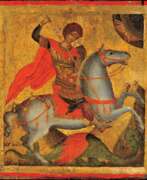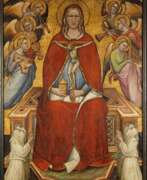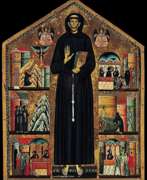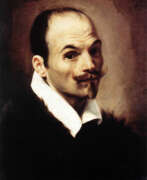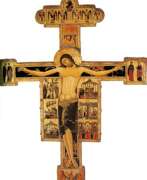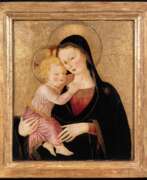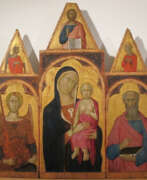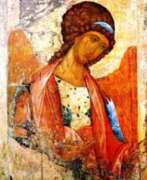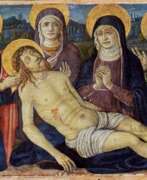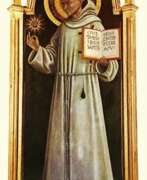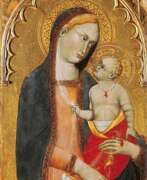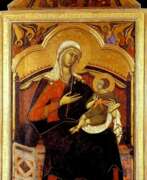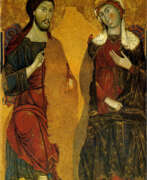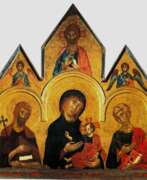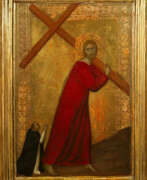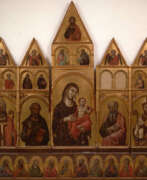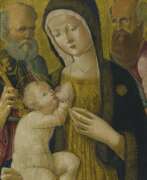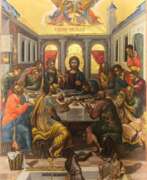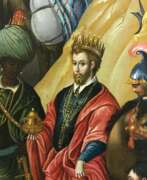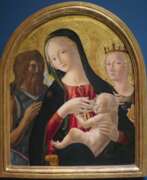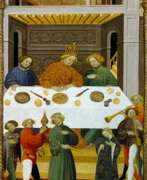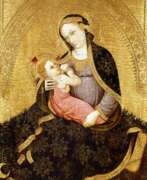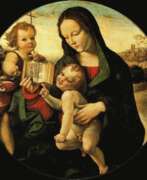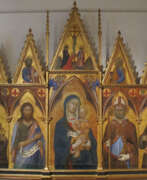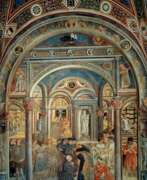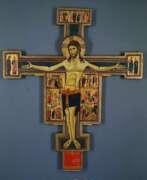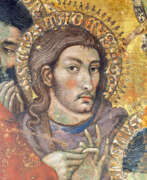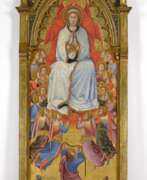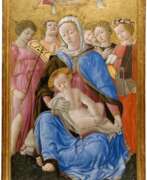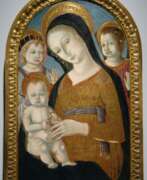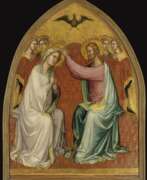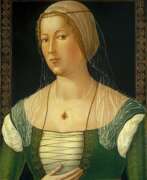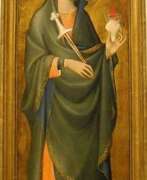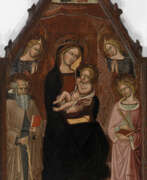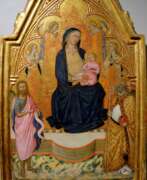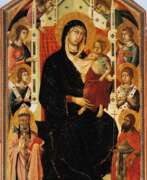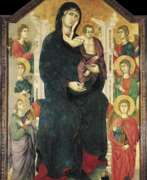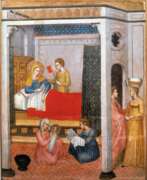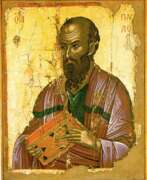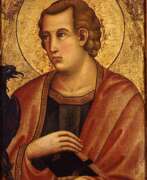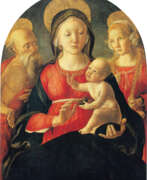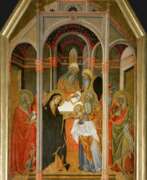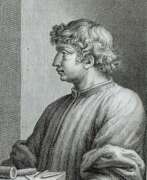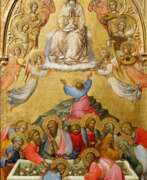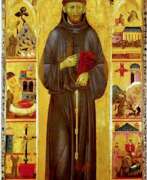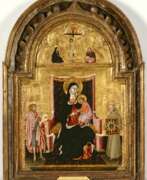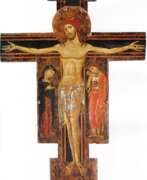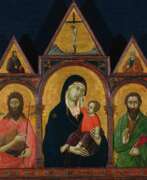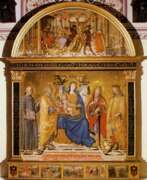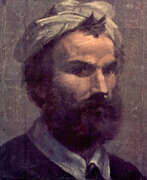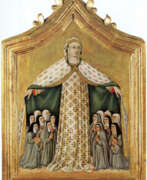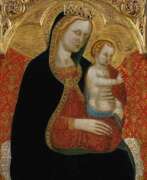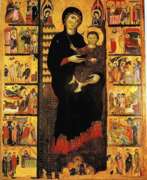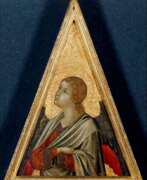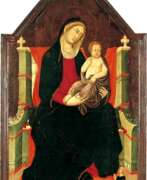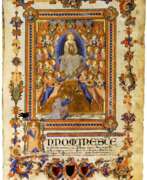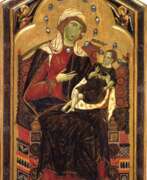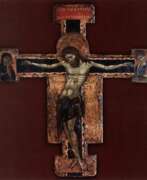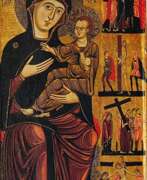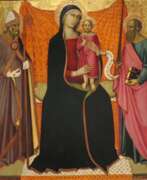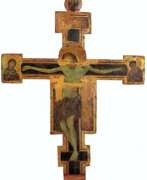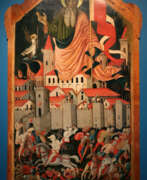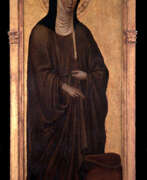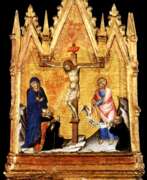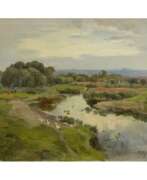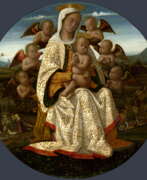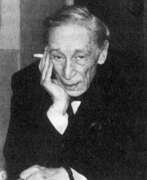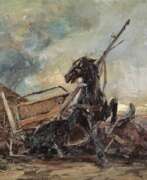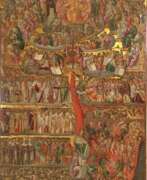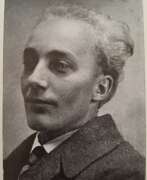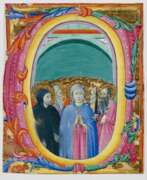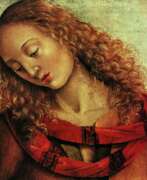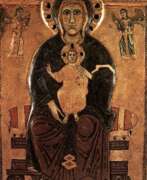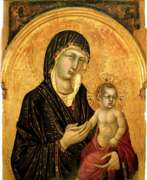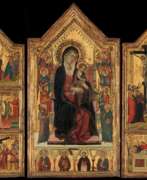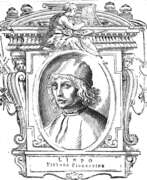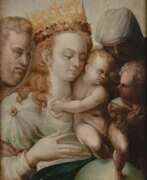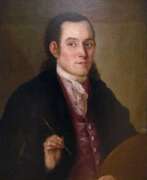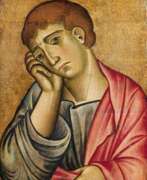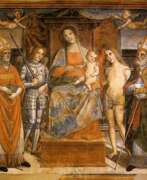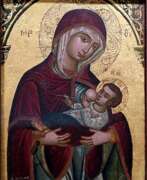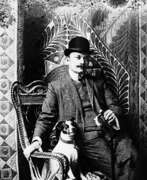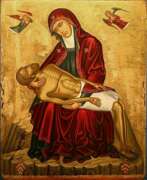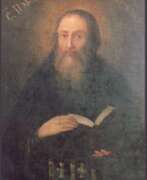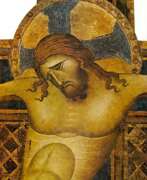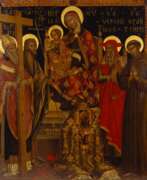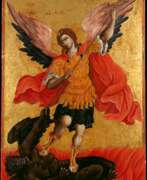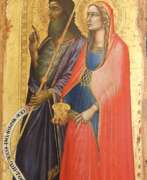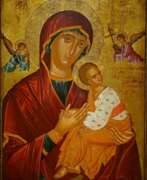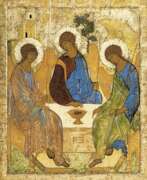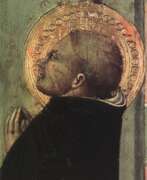Icon painters
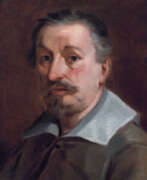

Francesco Albani was a renowned Italian painter and fresco artist. He is celebrated for his contributions to the academic Bolognese school, which was profoundly influenced by the Carracci family, under whom Albani trained. Albani's artistic journey began at the young age of 12, marking the start of a career that would see him become one of the 17th-century's most esteemed Bolognese masters.
Francesco Albani's style is characterized by its lyricism and often features cherubic figures, a trait that became his signature. Despite not embracing the monumentality or tenebrism prevalent in the works of his contemporaries, his thematic appeal and mannerist elegance have earned him a place in art history. His works often comprise mythological and religious scenes, executed with a refined and lyrical view of nature. This approach helped disseminate the classical ideals prominent in Carracci's landscapes.
Among Francesco Albani's notable works are his frescoes in the Hall of Aeneas at Palazzo Fava in Bologna and Palazzo Doria Pamphilj in Rome, and his paintings "The Judgment of Paris" and "The Toilet of Venus". His works can be found in prestigious collections worldwide, including the Museo del Prado, Galleria Borghese in Rome, and the Hermitage in St. Petersburg.
Francesco Albani's influence extended beyond his lifetime, with his classicising and idealised scenes finding favor with 18th-century French painters and collectors. However, his popularity waned during the 19th century. Despite this, his work remains an integral part of the study of Baroque art, particularly in understanding the transition from Mannerism to Baroque styles.
For collectors and experts in art and antiques, the legacy of Francesco Albani presents an opportunity to explore a pivotal moment in the history of Italian painting. His works not only provide aesthetic pleasure but also serve as important cultural artifacts, offering insights into the artistic trends and societal values of the 17th century.
If you are passionate about art history and wish to stay informed about new discoveries, sales, and auction events related to Francesco Albani, consider signing up for updates. This subscription will ensure you remain at the forefront of developments in the world of art and antiques, especially concerning this remarkable Italian master.
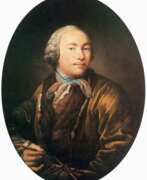

Ivan Petrovich Argunov (Russian: Иван Петрович Аргунов) was a distinguished Russian painter of the 18th century, celebrated for his significant contribution to portrait art. As a serf born into the Argunov family, who were established artists themselves, Ivan's talent was nurtured and supported by his patrons, leading to a unique position within the cultural and artistic hierarchies of his time. His specialization in portraiture allowed him to capture the essence of Russia's social elites, including members of the imperial family, as well as ordinary Russians, thereby providing a wide-ranging visual documentation of the era's societal strata.
Argunov's art is noted for its meticulous attention to detail, vibrant realism, and the emotional depth he brought to his subjects. His portraits are more than mere representations; they are intimate glimpses into the lives and characters of his sitters. Among his most famous works is the portrait of Princess Natalia Petrovna Golitsyna, showcased in the Tretyakov Gallery in Moscow. This particular piece stands out for its intricate portrayal of fabric textures and the detailed rendering of facial expressions, which have been lauded for their lifelike quality and depth.
Argunov's legacy extends beyond his artistic achievements; he played a pivotal role in shaping the course of Russian portraiture. His works are preserved in major museums and galleries across Russia, serving as a testament to his skill and the cultural richness of his time. For collectors and experts in art and antiques, Argunov's paintings are not just historical artifacts but are cherished for their aesthetic value and the insight they offer into 18th-century Russian culture.
We invite enthusiasts and collectors to stay connected with us for updates on new product sales and auction events related to Ivan Petrovich Argunov. By signing up, you will gain exclusive access to the finest pieces of Russian art and antiques, ensuring you never miss an opportunity to enrich your collection with works by one of Russia's most esteemed artists.
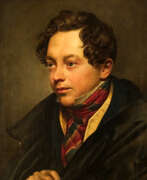

Pyotr Vasilievich Basin (Russian: Пётр Васильевич Басин) was a Russian painter, born in 1793 and passed away in 1877, renowned for his large-scale religious, historical, and portrait artworks. A distinguished member of the Imperial Academy of Arts in Saint Petersburg, Basin's career was marked by a significant period in Rome, where he studied under a fellowship and produced nearly a hundred paintings.
Basin's artistic legacy includes notable works such as the allegorical figures for the Winter Palace and several religious scenes for the Saint Isaac's Cathedral and Kazan Cathedral. His contributions extend to teaching roles at the Imperial Academy, where he influenced future generations until his retirement due to a progressive eye disease.
Basin's works are prominently displayed in the Russian Museum among other locations, serving as a testament to his skill and dedication to the arts. For collectors and enthusiasts looking to explore more about Basin's works or receive updates on sales and auctions featuring his art, signing up for specialized newsletters can provide timely and exclusive information.
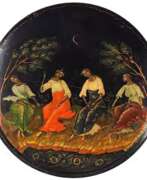

Aleksandr Ivanovich Blokhin was a Russian Soviet painter.
Alexander Ivanovich Blokhin was engaged in painting icons for several decades. In 1925-1928 he worked in the Palekh artyel of ancient painting. He painted papier-mâché items (caskets, cigarette cases, powder pots) on literary subjects, also executed genre and battle compositions.
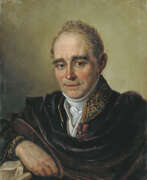

Vladimir Lukich Borovikovsky (Russian: Влади́мир Луки́ч Боровико́вский), a distinguished Russian artist of Ukrainian Cossack origin, was renowned for his mastery in portrait painting and ecclesiastical art. Born in Mirgorod, now Myrhorod, Ukraine, in 1757, Borovikovsky lived in Ukraine until the age of 31 before moving to St. Petersburg. His journey into the art world began under unusual circumstances when Empress Catherine II was impressed by his allegorical paintings, leading him to relocate to Saint Petersburg and adopt the more aristocratic surname Borovikovsky.
Borovikovsky's work epitomizes the sentimentalism era, capturing the essence and inner beauty of his subjects with a unique sensitivity and elegance. His ability to convey the nuanced emotions and dignified personalities of his sitters through intimate and detailed portraiture earned him acclaim, particularly among the Russian imperial family and nobility. Throughout his career, he produced about 500 portraits, with 400 surviving today, including notable figures such as Catherine II, Paul I, and Alexander Kurakin, as well as the celebrated "Portrait of M.I. Lopukhina".
In his later years, Borovikovsky's focus shifted towards religious painting, contributing significantly to the Kazan Cathedral and other ecclesiastical sites in St. Petersburg. Despite facing challenges, including court intrigues and a personal struggle with mental discord and alcohol, he left a lasting legacy through his art, which remains highly regarded for its depth, sincerity, and technical skill.
Collectors and experts in art and antiques cherish Borovikovsky's work for its historical significance and profound emotional resonance. His paintings, a fusion of classicist and sentimental styles, continue to inspire and captivate audiences, preserving the legacy of one of Russia's most gifted portraitists.
For updates on exhibitions and auction events featuring Vladimir Lukich Borovikovsky's work, sign up for our newsletter. Stay informed about the latest discoveries and opportunities to add a piece of history to your collection.
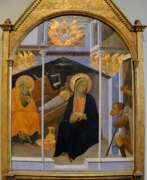

Bartolomeo Bulgarini (also Bartolomeo Bolgarini) was an Italian painter of the Sienese School. Before he could be identified by name and his work classified, some of his paintings were grouped in art history under the pseudonyms Ugolino Lorenzetti or Master of Ovile.
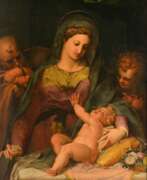

Peter Candid was a Flemish painter, tapestry designer, draughtsman and sculptor.
Pieter Candide worked mainly in Italy and Germany. He was an artist at the court of the Medici in Florence and at the Bavarian court of Duke Wilhelm V and his successor Maximilian I in Munich.
His paintings range from historical paintings, portraits, mythological scenes and allegories. He created large altarpiece images as well as complex decorative designs.
Candide's style was characterised by a combination of Italian and Flemish influences, with a particular emphasis on detailed, realistic depictions of the human form.
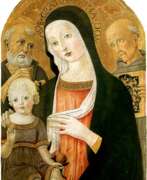

Benvenuto di Giovanni di Meo del Guasta, an Italian painter hailing from Siena, was recognized for his compelling panel paintings, frescoes, and manuscripts produced over a span of 43 years, during the Renaissance period. Born around 1436, his work life was largely based in Siena, where he was first documented as a young artist in 1453. His teacher was likely Vecchietta, with whom he collaborated on fresco decoration in Siena's baptistry. Di Giovanni married Jacopa di Tommaso da Cetona in 1466, which marked the beginning of a productive period that saw the creation of notable works such as the Annunciation and Saints (1466) and the Nativity (1470).
Benvenuto di Giovanni's style was characterized by its noble, classical forms and bright, intensely lit, glassy consistency, influenced by his interaction with North Italian miniaturists like Liberale da Verona and Girolamo da Cremona. His works, such as the triptych from Montepertuso (1475), the Borghesi altarpiece, and the triptych in the National Gallery, London (1479), stand as masterpieces of his sharply defined and surreal world. In the later years of his career, di Giovanni was commissioned for floor designs in the Siena cathedral and miniatures for its choir books, showing a style that occasionally simplified due to collaboration with his son, Girolamo di Benvenuto, but remained distinctively his.
Significant works by Benvenuto di Giovanni include "The Adoration of the Magi" and "The Crucifixion," both showcasing his mastery in perspective and religious narrative. For collectors and experts in art and antiques interested in the evocative and historically rich works of the Renaissance, Benvenuto di Giovanni's oeuvre offers a captivating exploration of 15th-century Sienese artistry.
To stay updated on sales and auction events featuring works by Benvenuto di Giovanni, sign up for updates. This subscription ensures that enthusiasts and collectors are always informed about new opportunities to engage with the exquisite works of this renowned Renaissance artist.
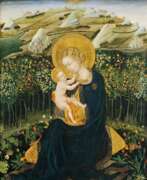

Giovanni di Paolo di Grazia was an Italian painter, working primarily in Siena, becoming a prolific painter and illustrator of manuscripts, including Dante's texts. He was one of the most important painters of the 15th century Sienese School. His early works show the influence of earlier Sienese masters, but his later style was more individual, characterized by cold, harsh colours and elongated forms. His style also took on the influence of International Gothic artists such as Gentile da Fabriano. Many of his works have an unusual dreamlike atmosphere, such as the surrealistic Miracle of St. Nicholas of Tolentino painted about 1455 and now housed in the Philadelphia Museum of Art, while his last works, particularly Last Judgment, Heaven, and Hell from about 1465 and Assumption painted in 1475, both at Pinacoteca Nazionale (Siena), are grotesque treatments of their lofty subjects. Giovanni's reputation declined after his death but was revived in the 20th century.
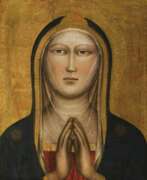

Niccolò di Pietro Gerini was a pivotal figure in the Italian art scene of the late Gothic period, celebrated for his contributions that spanned from the late 14th to the early 15th century. Born in Florence around 1340, Gerini's artistry flourished within the walls of his native city, although his talent also led him to work in Pisa and Prato. Unlike the innovative currents that swept through the art world during his time, Gerini remained faithful to traditional compositions, favoring stiff and dramatic movements in his figures.
Gerini's education and career were deeply intertwined with the artistic guilds of Florence. His father's membership in the Guild of Saint Luke in 1339 paved the way for Gerini's own entry into the Arte dei Medici e Speziali Guild by 1368, a testament to his early involvement in the city's artistic fabric. His works, marked by their large chins, sloping foreheads, and sharp noses, bore the influence of Gothic depictions, aligning him with the schools of Giotto di Bondone, Andrea di Orcagna, and Taddeo Gaddi.
Throughout his career, Gerini collaborated with notable artists like Jacopo di Cione, contributing to frescoes for the Guild hall of the Judges and Notaries in Florence and working on significant projects such as the altarpiece for the Coronation of the Virgin at San Pier Maggiore, Florence. His ability to blend architectural design with his painting skill is evident in these collaborations.
Gerini's paintings, including the triptych from 1387 housed in the National Gallery, London, and the Crucifixion, showcase his mastery over egg tempera on wood, a medium through which he conveyed religious narratives with profound solemnity and intricate detail. His works are preserved in prestigious collections, including The Hermitage, St. Petersburg, and the Alte Pinakothek, Munich, reflecting his enduring legacy in the annals of art history.
For collectors and experts in art and antiques, Gerini's oeuvre offers a rich exploration of late Gothic artistry, characterized by its adherence to traditional values while simultaneously capturing the spiritual and cultural nuances of his time. To stay informed on new discoveries and auction events related to Niccolò di Pietro Gerini, signing up for updates is a valuable resource for enthusiasts keen on this remarkable period of art history.
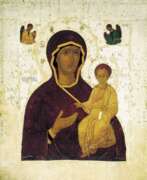

Dionisius, a distinguished Russian icon painter born around 1440, emerged as a pivotal figure in the Moscow school of icon painters, particularly towards the late 15th and early 16th centuries. His work is characterized by a unique style known as Muscovite mannerism, which features elongated figures, diminutive hands and feet, and serene, peaceful faces. Dionisius's artistry is most notably encapsulated in his comprehensive and best-preserved work, the fresco painting of the Virgin Nativity Cathedral at the Ferapontov Monastery, which stands out for its singularly pure and gentle colors, imbuing the scenes from the life of the Virgin with a solemn and festal mood.
Throughout his career, Dionisius enjoyed the patronage of many rich and notable figures, including Joseph of Volokolamsk, who commissioned him to paint over eighty icons for various cloisters. His first significant commission was for the Cathedral of the Dormition in the Moscow Kremlin in 1481. His Crucifixion icon, created in 1500, is particularly revered and showcases a novel approach to depicting this key scene in the Christian tradition, focusing on Jesus Christ, the Blessed Virgin Mary, and John the Theologian with an emphasis on suffering and redemption.
Dionisius's legacy extends beyond his own works to include several iconic panels attributed to him, showcasing various religious figures and scenes that profoundly influenced Russian art and iconography in the centuries that followed. His depictions often featured innovative elements, such as the personified Church and Synagogue, underscoring his significant impact on the development of Russian Orthodox art.
For collectors and experts in art and antiques, Dionisius's work represents a quintessential chapter in the history of Russian iconography, offering a deep well of cultural, historical, and artistic significance. To stay informed about new discoveries and auction events related to Dionisius's work, signing up for updates can offer valuable insights and opportunities to engage with this remarkable aspect of Russian heritage.
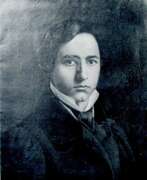

Franz Ittenbach was a German painter of the mid-nineteenth century. He is known as a historical and religious painter, associated with the Düsseldorf School of painting and considered one of the most important representatives of the Nazarenes.
Ittenbach created works mainly with religious subjects, which were characterized by simplicity of composition, nobility and correctness of drawing. Among his significant works are frescoes in various churches and altarpieces for temples. Ittenbach was a popular artist in court circles, a member of many European academies and the recipient of many medals and awards. He also painted portraits, although his main focus was on church art.
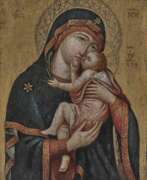

Pietro Lorenzetti was an Italian painter whose innovative contributions to the Sienese school of art marked a significant departure from the Byzantine style of the medieval period. Born in Siena, Lorenzetti was known for his detailed and expressive approach to painting, which helped lay the groundwork for the Italian Renaissance.
Renowned for his mastery in depicting light, shadow, and space, Lorenzetti introduced a sense of depth and realism previously unseen in Italian art. His works are characterized by a rich color palette and a keen observation of the human condition, rendering scenes with emotional depth and a tangible sense of atmosphere.
Among his most celebrated works is the "Birth of the Virgin" fresco in the Siena Cathedral, a masterpiece that showcases his ability to weave narrative and decoration into a cohesive whole. Lorenzetti's religious paintings, which are housed in various museums and churches, remain pivotal in understanding the evolution of European art during the 14th century.
For collectors and experts in art and antiques, Pietro Lorenzetti represents a fascinating study in the transition from medieval to Renaissance art. His contributions not only enriched the Italian artistic heritage but also influenced generations of artists to come.
To explore the legacy of Pietro Lorenzetti and stay informed about the latest research, exhibitions, and auction events featuring his work, signing up for updates is essential. This subscription will ensure that aficionados and collectors alike are always connected to the vibrant world of Sienese painting, offering exclusive insights and opportunities to appreciate the art of this pioneering master.
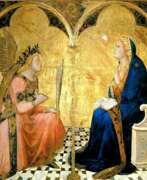

Ambrogio Lorenzetti or Ambruogio Laurati was an Italian painter of the Sienese school. He was active from approximately 1317 to 1348. He painted The Allegory of Good and Bad Government in the Sala dei Nove (Salon of Nine or Council Room) in Siena's Palazzo Pubblico. His elder brother was the painter Pietro Lorenzetti.
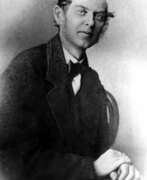

Ivan Kuzmich Makarov (Russian: Ива́н Кузьми́ч Мака́ров) was a Russian artist of the second half of the 19th century. He is known as a painter, one of the greatest portraitists of his time, a representative of academism.
Ivan Makarov in his portraits was able to present the model in the most favorable light, while maintaining the realism of the image. He was especially good at female and children's portraits. The artist's manner of painting is distinguished by the rigor of drawing, restraint of coloring, often built on a combination of tones - soft pink, silvery, bluish, light gray. The master often inscribed the composition in a round or oval shape of the picture.
The artist also painted many icons for churches and other religious paintings.
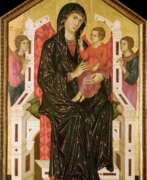

Master Badia a Isola (Italian: Maestro di Badia a Isola) was an Italian anonymous painter of the Sienese school who worked in and around Siena in the late 13th and early 14th centuries.
The conditional name of the master comes from the large icon "Madonna on the throne with a child and two angels" (Maesta), which used to be in the church of St Salvatore and Sirin in Badia a Isola in Monteriggioni.
Researchers believe that the Master of Badia a Isola belonged to the inner circle of the great Duccio di Buoninsegna, and was in the first rank of his pupils and followers. It is assumed that he worked in the workshop in the early period of Duccio's work. His works have direct parallels with those of Ugolino di Nerio, especially in the delicate contours of the figures and the sweet faces of the Madonnas.
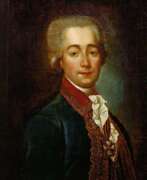

Leontiy Semenovich Miropolskiy (Russian: Леонтий Семёнович Миропольский) was a Russian painter, portraitist, copyist, and icon painter, prominent in the late 18th and early 19th centuries. He became an academician of the Imperial Academy of Arts after demonstrating his skills with a portrait of Gabriel Ignatievich Kozlov, an adjunct professor at the academy. His works include portraits that are highly individualized and closely resemble those of his teacher, Dmitry Levitsky.
Miropolskiy's contributions to Russian art extend beyond portraits; he was also an accomplished icon painter. He crafted icons for St. Andrew's Cathedral in Kronstadt, which, although the cathedral itself has since been destroyed, marks a significant part of his legacy in religious art. His paintings are housed in prestigious locations such as the State Russian Museum and the State Tretyakov Gallery, reflecting his lasting impact on Russian cultural heritage.
For art collectors and enthusiasts interested in exploring more about Miropolskiy's works or potential acquisition opportunities, consider signing up for updates related to his paintings. This subscription will keep you informed about new discoveries and auction events specifically tied to Miropolskiy's artistry.
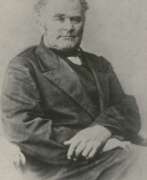

Timofey Yegorovich Myagkov (Russian: Тимофей Егорович Мягков) was a Russian iconographer and portrait painter, active during the 19th century. Born in 1811 and trained at the Moscow School of Painting, Sculpture and Architecture, Myagkov is celebrated for his significant contributions to Russian religious and secular art.
Myagkov's work spans from intricately painted icons to evocative portraitures, many of which were recognized for their depth and mastery during his time. Notable among his works is the "Family Portrait," which earned him a silver medal and is preserved in the Tretyakov Gallery. His murals and icons decorated several churches across Russia, some of which have survived to this day despite the country's turbulent history.
Many of Myagkov's works are housed in prestigious locations, such as the State Historical Museum in Moscow and the Tretyakov Gallery. His artistic legacy is marked by his ability to blend traditional Russian iconography with the more expansive techniques of portrait painting, making his works unique artifacts of Russian art history.
For those interested in exploring the rich tapestry of Russian art, keeping updated on exhibitions and auctions featuring Timofey Myagkov's work can be enriching. You can sign up for updates here [insert link], ensuring you don't miss out on new insights and opportunities related to this distinguished artist.
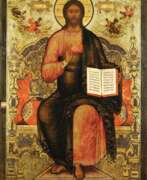

Gury Nikitin (Russian: Гурий Никитин (Гурий Никитич Кинешемцев), was a Russian painter and iconographer born in 1620 in Kostroma, Russia, where he also died in 1691. Known primarily for his wall paintings, frescos, and iconography on wood panels, Nikitin was a leading figure in Russian art, particularly noted for his role in the Kostroma Brotherhood of Painters, an artist guild he led until his passing. His works are celebrated for combining biblical themes with vivid scenes from daily life, showcasing a perfect blend of monumentality and decorative art, particularly evident in his most famous icon, the Icon of St. Quiricus and St. Juliet.
Nikitin's artistry is marked by its adherence to canonical themes while introducing complex compositions inspired by Johannes Piscator's bible. Under his guidance, the most significant Russian fresco painting ensemble of the 17th century was created, especially noted in the Church of Elijah the Prophet in Yaroslavl. Art historians admire Nikitin for his unique style, integrating non-mirror symmetry, contrasts of light and shade, and a vibrant color palette that enhances the decorative appeal of his compositions.
For collectors and experts in art and antiques, Nikitin's oeuvre represents a crucial period in the development of Russian iconography and fresco painting. His contributions have left a lasting impact on the artistic landscape of the 17th century, making his works a valuable study for those interested in the evolution of Russian art.
To stay updated on exhibitions and auctions featuring Gury Nikitin's work, signing up for updates is recommended. This will ensure that collectors and enthusiasts are well-informed about new sales and events related to this remarkable artist's legacy.
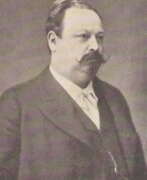

Ludwig Seitz was a German-born Italian painter of the last third of the nineteenth and early twentieth centuries. He is known as a historical and religious painter, the son of the famous painter Alexander Maximilian Seitz.
Ludwig Seitz dealt mainly with religious subjects and was characterized by his ability to masterfully recreate the styles of the Old Masters. He made an important contribution to the restoration and decoration of churches in Rome and created a number of frescoes and images for various cathedrals and chapels. In particular, he worked on the altarpieces and the restoration of the paintings in the castle of Prince Fürstenberg on the shores of Lake Constance.
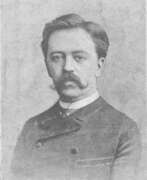

Ivan Fyodorovich Seleznyov (Russian: Иван Федорович Селезнёв) was a Russian and Soviet artist of the last third of the 19th - first third of the 20th centuries. He is known as a painter of academic direction and a teacher.
Ivan Seleznyov worked in historical, portrait and domestic genres, as well as painted landscapes and still lifes. He became famous for his paintings on the subjects of Russian history, life scenes and realistic genre portraits. He also created and restored frescoes in churches in Kiev and was one of the organizers of the Kiev Fellowship of Religious Painting.
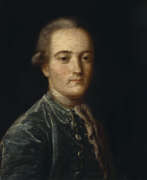

Mikhail Shibanov (Russian: Михаил Шибанов) was a Russian painter renowned for his contributions to the genre of portrait painting during the 1780s. His origins are humble; he was born into serfdom under the ownership of Prince Grigory Potemkin, with no definite records of his birth date available. Shibanov's artistic education took place at the Academy of Arts where he studied household painting from 1770 to 1780.
Shibanov's work primarily captured the life of peasants and Russian nobility through his realistic and genre paintings. Notably, he painted "Peasants' Meal" in 1774 and "The Celebration of the Wedding Agreement" in 1777. His mastery is exemplified in the portraits of significant historical figures, including the "Portrait of Count Alexander Dmitriev-Mamonov" from 1785, and the "Portrait of Empress Catherine II with Traveling Dress" created in 1787. These paintings are preserved in prominent Russian museums such as the Tretyakov Gallery and the Russian Museum.
Despite the limitations of his status and era, Shibanov's work left a lasting impression in Russian art history, embodying the characteristics of the Neoclassicism movement. His exact death date remains uncertain but is recognized as post-1798.
If you're captivated by the artistry and historical significance of Mikhail Shibanov, sign up for updates to stay informed about new findings, upcoming sales, and auction events featuring his work. This subscription ensures you remain connected to the fascinating world of Russian neoclassical art and Shibanov's lasting legacy. Subscribe today to enhance your collection and deepen your knowledge.
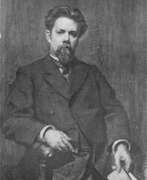

Nikolay Gustavovich Schilder (Russian: Николай Густавович Шильдер) was a Russian painter known for his genre and battle scenes. Born in 1828 in Kharkiv, Schilder became an influential figure in Russian art. He studied at the Imperial Academy of Arts and was influenced by the works of Pavel Fedotov, which led him to focus on genre painting.
Schilder's notable works include "The Temptation" (1857), "Family Happiness" (1858), and "The Repayment of Creditors" (1861), the latter earning him the title of academician. His detailed and emotive portrayal of everyday life and historical events made his works highly regarded in art circles.
Several of his paintings, including portraits of prominent figures such as Alexander III and Maria Feodorovna, are displayed in museums like the State Russian Museum and the Orsay Museum in Paris.
Stay updated on new sales and auction events related to Nikolay Gustavovich Schilder by signing up for our updates.
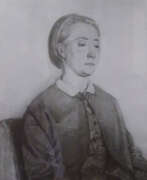

Helena Skirmunt was a Polish, Lithuanian, and Belarusian artist of the mid-19th century. She is known as a painter, graphic artist and sculptor.
As an artist, Helena Skirmunt painted landscapes, portraits, and icons; as a sculptor, she created numerous portrait medallions and religious works. She was also famous for creating "historical" chess pieces, choosing as their theme the Viennese campaign of the Polish King Jan III Sobieski, who defeated the Turkish army in 1683.
